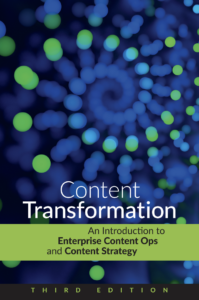[updated to fix broken link]
Quadralay’s new ePublisher Pro was released with, shall we say, minimal documentation. The user guide describes how to manipulate the basic interface, but details on how to go under the covers and customize the XSL transformations that make up the core of the product are absent.
It appears that the company is trying to address this shortcoming with a wiki. There are some concerns about this approach, though. Char James-Tanny points out that “no one seems to have the rights to any of the material that’s posted.” And Bill Swallow writes this in waxing techcomm: “If the intent is to supply users with a means of online support/reference, I think it would be best to triage the contributed content, have it validated by a company representative, and then published.”
I think the wiki approach raises a larger question–how much documentation should a product creator be responsible for? A product like ePublisher Pro provides a configuration platform–the customization possibilities are endless. For advanced customization, ePublisher Pro is more comparable to a software development environment than a menu-driven application. Documenting a “development platform” is very, very tricky.
Nonetheless, there are some things that Quadralay should have provided and hasn’t. These include:
- An inventory of the XSL transformation files provided with the product and an overview of what each file does.
- Examples of how to perform common customizations that cannot be accomplished inside the user interface.
- Documentation of the Quadralay-provided XSLT extension functions.
Posting these inside the wiki would be a nice start.
Quadralay has tried before to put the expert user community to work (anyone remember the WebWorks Publisher forums on their web site?). But speaking as a consultant, I’m not likely to post into the wiki when the ownership of that code is so unclear. Furthermore, we already have the wwp-users mailing list, which has over 3,000 members. Why bother with the wiki?
Finally, there is a massive disclaimer as part of the wiki:
All projects, code snippets, suggestions presented in this medium are colloborative [sic] materials expressed by both Quadralay personnel and WebWorks power users. Material taken from this medium and implemented into your existing production workflow or testing environments should be carefully considered and is done at your own risk. Although our product support consultants can and will place material on this medium to faciliate collaboration between Quadralay and its customers, Support Incidents submitted through webworks.com regarding issues with implementation of this material will not be accepted. Support for the implementations expressed here will only be supported through this medium.
In other words, if you use information posted on the wiki by Quadralay to customize your project, and it doesn’t work, Quadralay support will not help you.
Boo.
I understand the concerns surrounding wikis and the ability of anyone to edit a page, but it seems this could actually be resolved quite easily. The wiki can be set up with Official and Unofficial pages. Official pages are built by Quadralay employees, are editable only by Quadralay employees, and Quadralay support will provide support for those pages. Unofficial pages are those created by ePublisher Pro users; they are the “use at your own risk” section of the wiki.



